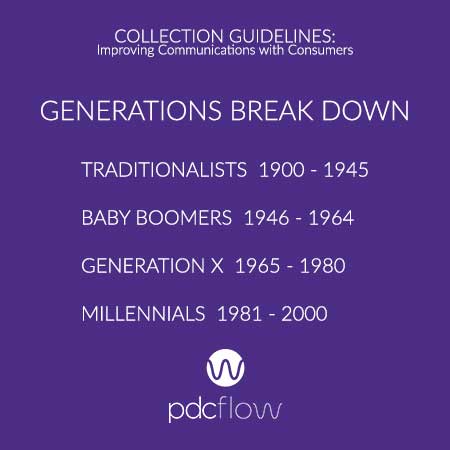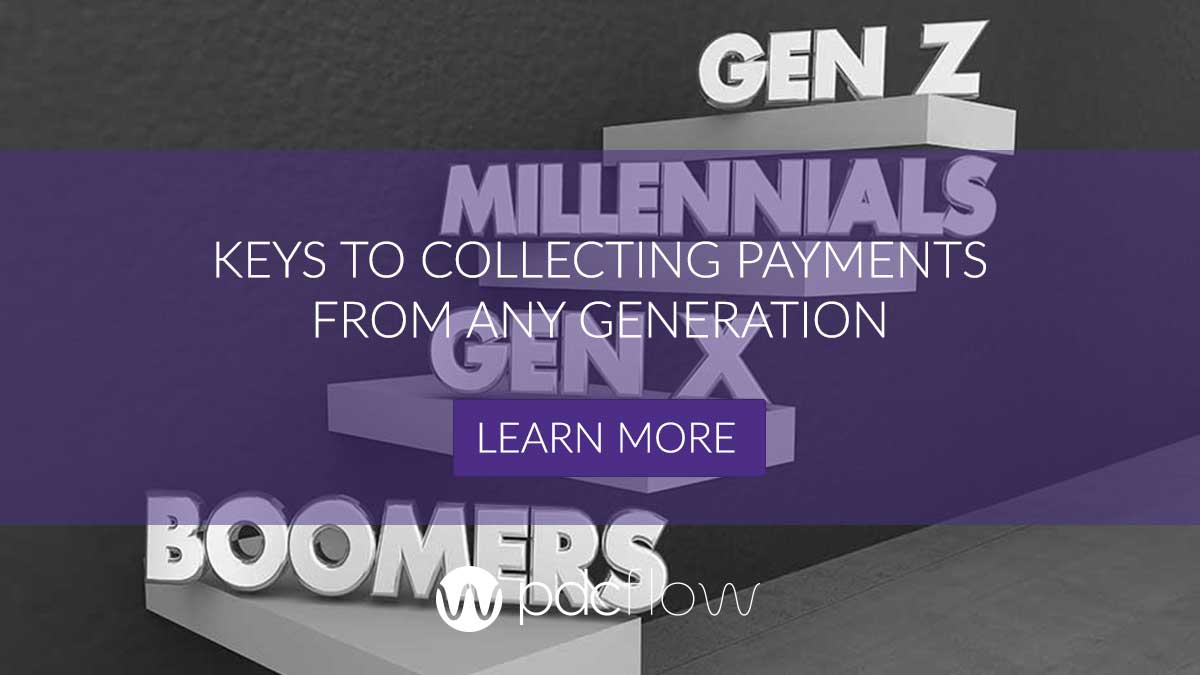As the year comes to a close, so does another collaboration between the California Association of Collectors and PDCflow. This year’s courses addressed collection guidelines for state and federal call recording consent, a special look at call consent in California, spotting call baiting and how to respond to it, and much more.
As always, thank you to the panelists who shared their years of experience in the debt collection industry. This entry, the last in this year’s series, focuses on improving communications with consumers, especially those from different generations.
Consumer Communications Pros and Cons for Debt Collectors
Due to generational and personal consumer preferences, there isn’t a one-size-fits-all collection guideline for communicating. Written methods like collection letters, emails and text allow pre-written messages to be screened by your attorneys and verified for compliance. Telephone and web chat allow for personal interaction with consumers. While there is no one right answer, here are the pros and cons of each communication method to help you choose which ones may work best for your agency.
Email is a preferred method of contact for Baby Boomers, Generation X, and Millennials. This makes it one of the best communication methods for reaching nearly every generation of consumer. The wide popularity, and its instant and cost-effective perks are just a few reasons why. However, you must obtain your consumer’s email addresses to use it. You also may be at risk for a third party disclosure violation if your emails don’t use dual authentication to be accessed. Before using email, check with your agency’s attorney to be sure you’re following the consent laws associated with this communication method.
Traditionalists and Baby Boomers still use mail often, and it is the preferred contact method of the FDCPA. It’s also a positive way to contact consumers because no prior consent is needed. But it’s also slow, expensive and less effective for Generation X and Millennials. Worst of all, there’s no way to verify the mail is actually received. Some ignore their mail, and others may have moved from the address your office has on file.
Telephone
Phone is another communication method good for reaching all generations. Plus, speaking live gives your collectors the opportunity to overcome stalls and objections. It’s also regulated by law and call recordings are tight proofs of the conversations your agents have with the consumers. But many people either block calls, or simply don’t answer them. Phone calls also require extensive compliance training. Call baiting, leaving collection messages, and basic telephone collection communications must all be taken into account for collection calls.
Text
Text messaging is becoming a more popular communication method for the younger generations of consumer. It’s quick, direct, and less expensive than mail. However, there are TCPA limitations that must be followed. Texting also requires consent and the messages have a shorter character limit.
Web Chat
While older generations aren’t as interested in web chat communication, it is preferred by Millennials and Generation Z, which indicates it may become more popular in the coming years. It is direct, fast, and inexpensive. However, web chat requires available staff to answer chats as they come in. It’s also difficult to verify right party contact, and clear rules for this communication method have yet to be defined.
Using the Right Words
The communication method you use to interact with consumers is only one piece of the puzzle. If you don’t take into account how each generation of consumer deals with money, prefers to communicate and responds to conflict, you may not get your best possible results during the collection process.
Values and How the Generations Deal with Money
- Traditionalists - This generation was raised to adhere to rules. They are disciplined, hard workers. They experienced the great depression and are inclined to save money and pay cash.
- Baby boomers - This generation was raised in an era that caused them to question authority. They want to make a difference. They were brought up in a good economy when credit cards were beginning to become popular. They are inclined to buy now and pay later.
- Generation X - Gen X-ers were raised to have high job expectations, are well-educated, and are technologically literate. They exercise caution and try to save their money.
- Millennials - This generation overall is tolerant, self-confident and very educated. The economic climate has changed since this generation has come into adulthood. Overall the generation tends to earn money in order to spend, rather than making saving a priority.

Responding to Conflict
When addressed with the subject of their debts, some consumers might be embarrassed, angry or ashamed, which can cause conflict during collection. Arm your agents with the collection guidelines on how each generation responds to conflict to increase their success.
- Traditionalists - This group tends to avoid confrontation. They won’t often voice concerns to authority figures even when they disagree.
- Baby boomers - This generation sees individual conflict as problematic. Their preferred method of conflict resolution is consensus building or working through issues.
- Generation X - They see conflict like ripping off a bandaid. They prefer a direct approach when expressing points of view and giving feedback.
- Millennials - Are afraid of conflict, and sensitive to criticism. Disagreement can cause millennials to be confused and unable to choose a course of action. Are more likely to elevate issues to supervisors than other generations.
How To Communicate Using the Right Words
Using the right words while successfully collecting on a debt can be a hard line to walk. Kelly Parsons-O’Brien, President of Pacific Credit Services is a big believer in a three step system that can put any consumer in the right mindset to resolve their debts.
- Validate the consumer’s stall or objection
- Make them feel good
- Tell them what you CAN do
But as with many other aspects of collecting, it’s important to consider the consumer’s background when following this method. Those from different generations respond differently to talking points. That’s why it’s important to figure out what resonates with each group.
Traditionalists
- Validation - “I can see how important that this is for you.”
- Good feelings - “I would like to help you today.”
- What CAN you do - “I can walk you through how to…”
Baby Boomers
- Validation - “Thank you for sharing that with me.”
- Good Feelings - “I’d like to help you take care of…”
- What CAN you do - “Let me ask you a question.”
Generation X
- Validation - “I can see why you would feel this way.”
- Good Feelings - “I am certain we can work together to…”
- What CAN you do - “I need to research…”
Millennials
- Validation - “I can hear your frustration and…”
- Good Feelings - “I have great news.”
- What CAN you do - “I will be able to help get this worked out for you.”
For more suggestions on how to connect with each generation during the collection process, download the Generational Communications: A Guide for Collections.





